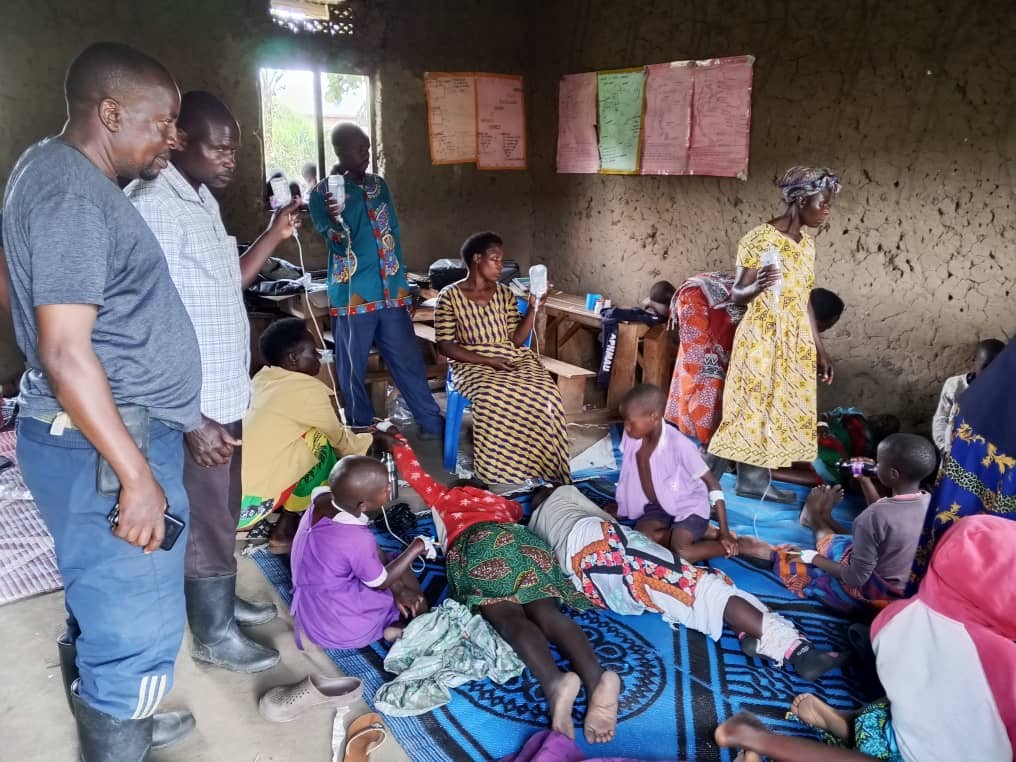
NTUNGANO. The Ministry of Health has launched a deeper investigations into the tragic incident in Ntungamo District, where more than 100 pupils reportedly became unconscious after receiving the wrong medication during a deworming exercise.
This development comes amid growing public skepticism over the official explanation of a medical error, even as four of the affected learners remained hospitalised yesterday.
Dr Daniel Kyabayinze, the director of Public Health at the Health ministry, said in a statement on Wednesday that disciplinary action will be taken against the health workers involved.
The incident, which occurred on October 30 during the ongoing Integrated Child Health Days (ICHD), saw unsuspecting learners in Ntungamo District being administered Phenobarbitone, a drug used to treat convulsions in epilepsy, instead of the intended de-worming tablets, Albendazole.
According to the ministry, the ICHD activity at Kajumbajumba Primary School in Kyafoora Parish, Rugarama North Sub-County, Ntungamo reached a total of 340 children.
Dr Kyabayinze said the exercise was conducted by a district health team comprising an enrolled nurse, an enrolled midwife, and a nursing assistant attached to Kyafoora Health Centre II.
“Findings indicate that the team mistakenly administered a medicine called Phenobarbitone, which is used as an anticonvulsant to control epileptic seizures, instead of albendazole, which is used for de-worming,” he said.
“The error resulted from a mix-up of medicine tins, leading to the accidental selection of the wrong medicine. The known side effects of Phenobarbitone are: sleepiness, vomiting, drowsiness, headache, dizziness, slow speech, and constipation,” he added. As a result, 100 children developed symptoms of drowsiness and were immediately evacuated for medical attention at Itojo General Hospital, Rwashamaire Health Centre IV, and Rubaare Health Centre IV.
Although Dr Kyabayinze stated that all affected children received prompt medical care and were stabilised and discharged, our reporter found that four pupils were still admitted at Rwashamaire Health Centre IV, six days after the incident.
“A comprehensive investigation team has been instituted to establish the circumstances that led to this unfortunate incident,” Dr Kyabayinze said, adding: “The health workers and support staff involved in this gross error will be held accountable, and appropriate disciplinary and corrective actions will be taken immediately.”
He reassured the public that the ministry will strengthen its interventions to prevent similar incidents.
“The Ministry of Health deeply regrets this incident and extends heartfelt apologies to all affected children, parents, and families. The safety and well-being of all Ugandans, especially children, remains our top priority,” he added.
Parents said most affected children began experiencing symptoms during lunchtime, with some becoming unconscious.
“Some of our children are day schooling, so they received the drug before lunch, and we did not see any problem until they returned to school. We had first thought it was poison, but later the District Education Officer told us it was the drug,” said Mr Nelson Namweta, one of the parents.
Mr Namweta said many parents rushed to the school to take their children to the hospital after learning about the adverse reactions. Mr James Abaho, the head teacher of Kajumbajumba Primary School, said they initially thought the children had received the correct medication.
Dr Amon Bahati, the Ntungamo District Health Officer, explained the cause of the error. “While the team was preparing, they picked one wrong tin of medicine, which is very similar in outlook. This was Phenobarbitone,” he said.
“Even the tablets are of the same size but are used differently and have different reactions. The drug was wrong and the dosage was also wrong,” Dr Bahati added.
He explained that children aged four to 12 typically receive 15–30mg of the drug when medically required, with each tablet containing 30mg. However, the team administered five tablets per child, amounting to 150mg, as would have been appropriate for Albendazole. “The drug is slow in action, which explains the delayed action that children had to have seizures, some even after lunch. The good thing is that it has limited fatality,” he noted.
Questions arise
Dr Herbert Luswata, the president of the Uganda Medical Association, condemned the blunder, stating that trained medical personnel should not make such errors. Dr Luswata said despite similarities in appearance, it is highly unlikely for a trained health worker to confuse Phenobarbitone with Albendazole.
“There are many things which are there to guide you as a health worker,” he said, citing manufacturers’ safeguards.
“Drug administration is a training which different cadres in health care receive. So the nurses receive this training, the doctors receive this training, and other health workers,” he explained. He outlined critical safety steps: “When you are going to administer a drug, there are some safety precautions which you must ensure before you give any drug to a person. And any well-trained health worker may never really miss unless if there is really a serious problem.”
Key checks include verifying the drug’s name, expiry date, and storage conditions. “Is it the right drug by checking the name? Is the drug viable and not expired by checking on the expiry date? And then you must ensure wherever you are picking this drug, it is from a safe place,” Dr Luswata stressed.